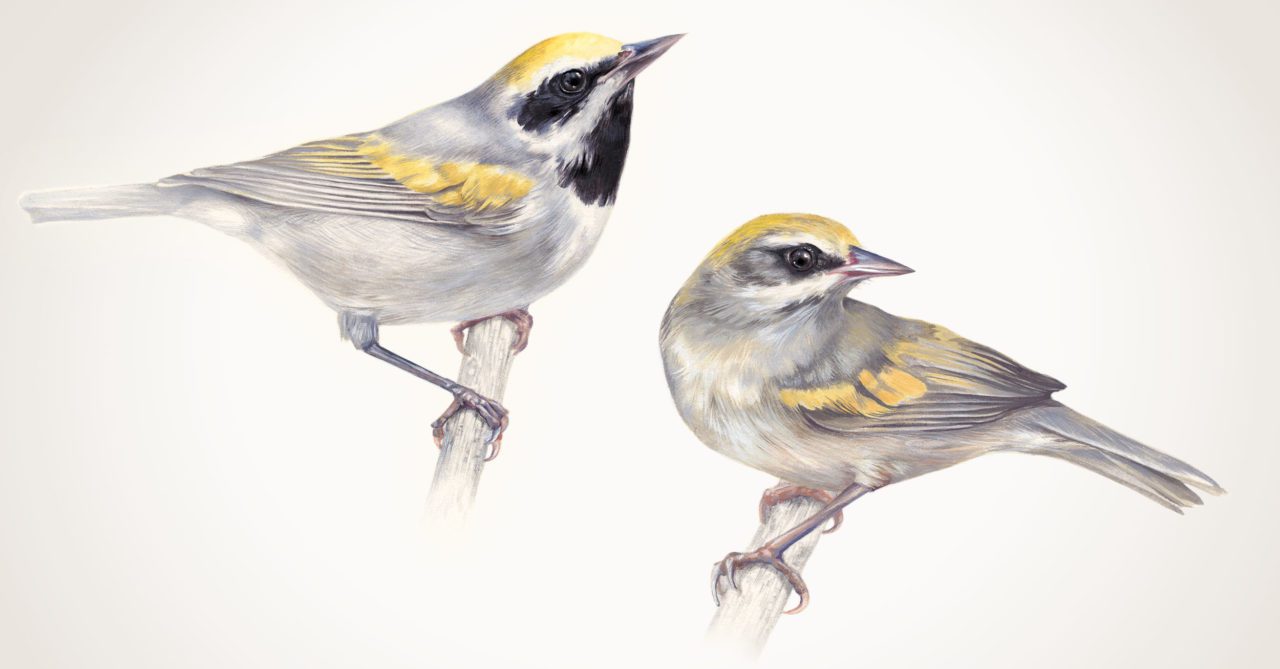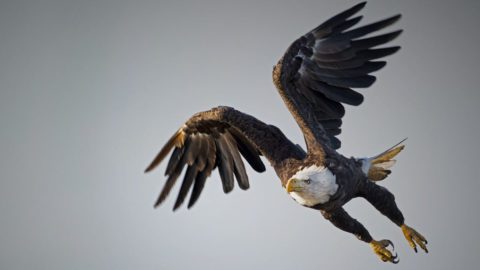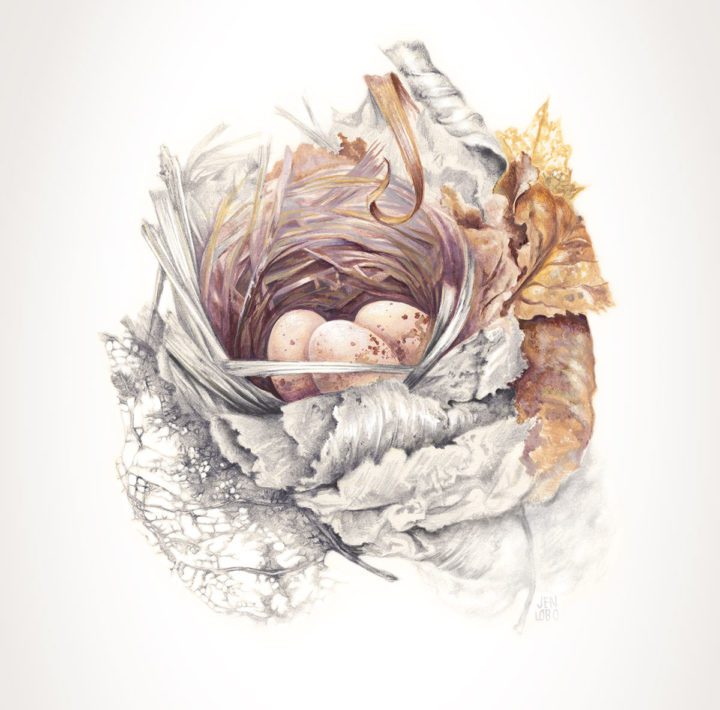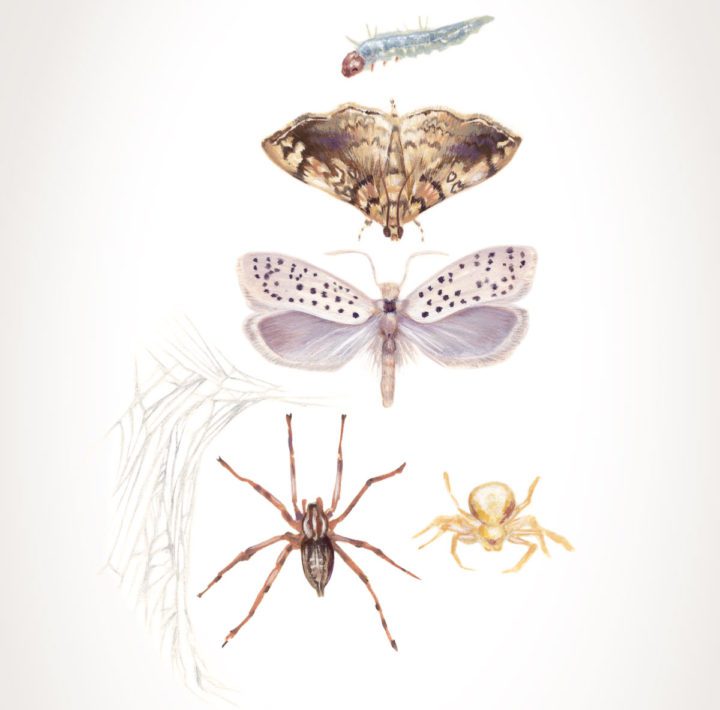Profile: Golden-winged Warbler
Adapted from All About Birds
June 25, 2021From the Summer 2021 issue of Living Bird magazine. Subscribe now.
Golden-winged Warblers breed in wet, shrubby tangles of the Upper Midwest and Appalachians. Recent radio-tracking studies have discovered that Golden-winged Warblers move into nearby timber stands immediately after fledging, which means they require habitat mosaics of shrubby, open areas (for nesting) and mature forest (with cover to protect fledglings from predators like hawks). Historically, natural disturbances—such as wildfires or floods from beaver dams—would create this patchy habitat. But in the 21st century, patchworks of early-successional and wooded habitats are uncommon in the species’s breeding range. Golden-winged Warblers have suffered one of the steepest population losses of any songbird species in the past 45 years, with an estimated 22% decline in the Great Lakes region and 43% decline in the northern Appalachians.
Male Golden-wings are extremely vocal at the start of breeding season, incessantly singing their buzzy, two-parted song.
Females build nests on or near the ground using tightly wound strips of plant material such as grapevine or arrowwood bark, often placed at the base of goldenrod or blackberry stalks. They finish by layering up to several dozen leaves around the outside.

Golden-winged Warbler nest. Illustration by Jen Lobo. 
Golden-winged Warbler diet. Illustration by Jen Lobo.
Golden-winged parents may use trickery to protect their young from predators. Adults feeding nestlings have been observed repeatedly carrying food down other plant stems away from the nest, possibly as a decoy, when they detected humans nearby.
Golden-winged Warblers are insectivores. Leafroller caterpillars are an important food source, along with other insects and spiders. They feed among the foliage by probing with their sharp bills into rolled-up leaves to find hidden prey. Moths also make up a good portion of their diet, though they rarely hunt prey on the wing.
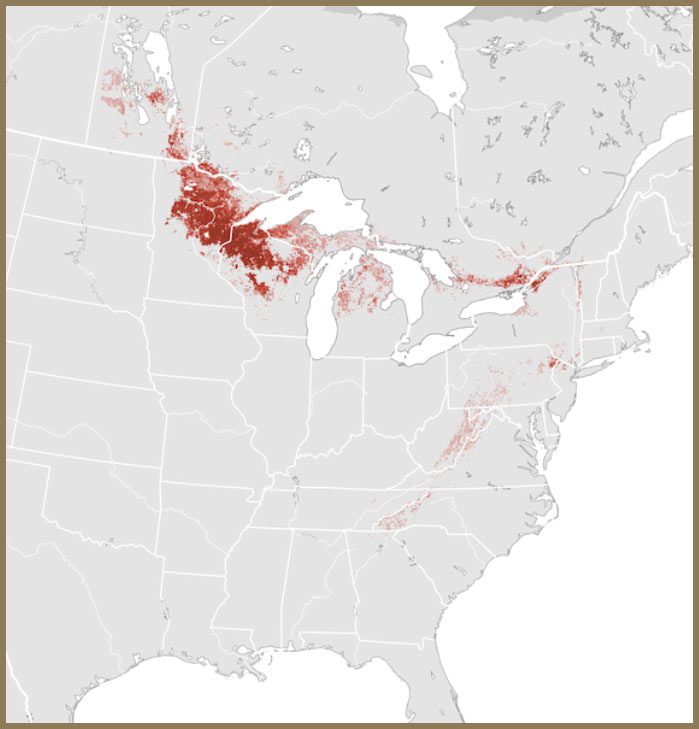
Breeding Season Abundance (June 7 To July 27):
The Upper Midwest is the stronghold of Golden-wings’ breeding range; Minnesota has the highest remaining density of Golden-winged Warblers, with about half the global population. Much smaller populations breed in southern Ontario, northern New York, the Appalachians, and near the border where New York, New Jersey, and Pennsylvania meet.
Find this Bird:
Your best bet for spotting this increasingly rare species is to visit a shrubby, open area in early summer where there are known Golden-wings. During breeding season, males are very vocal and active and make long, conspicuous flights, perching near the tops of saplings to sing boldly.
This profile is adapted from the Golden-winged Warbler species account on All About Birds.

All About Birds
is a free resource
Available for everyone,
funded by donors like you
American Kestrel by Blair Dudeck / Macaulay Library
